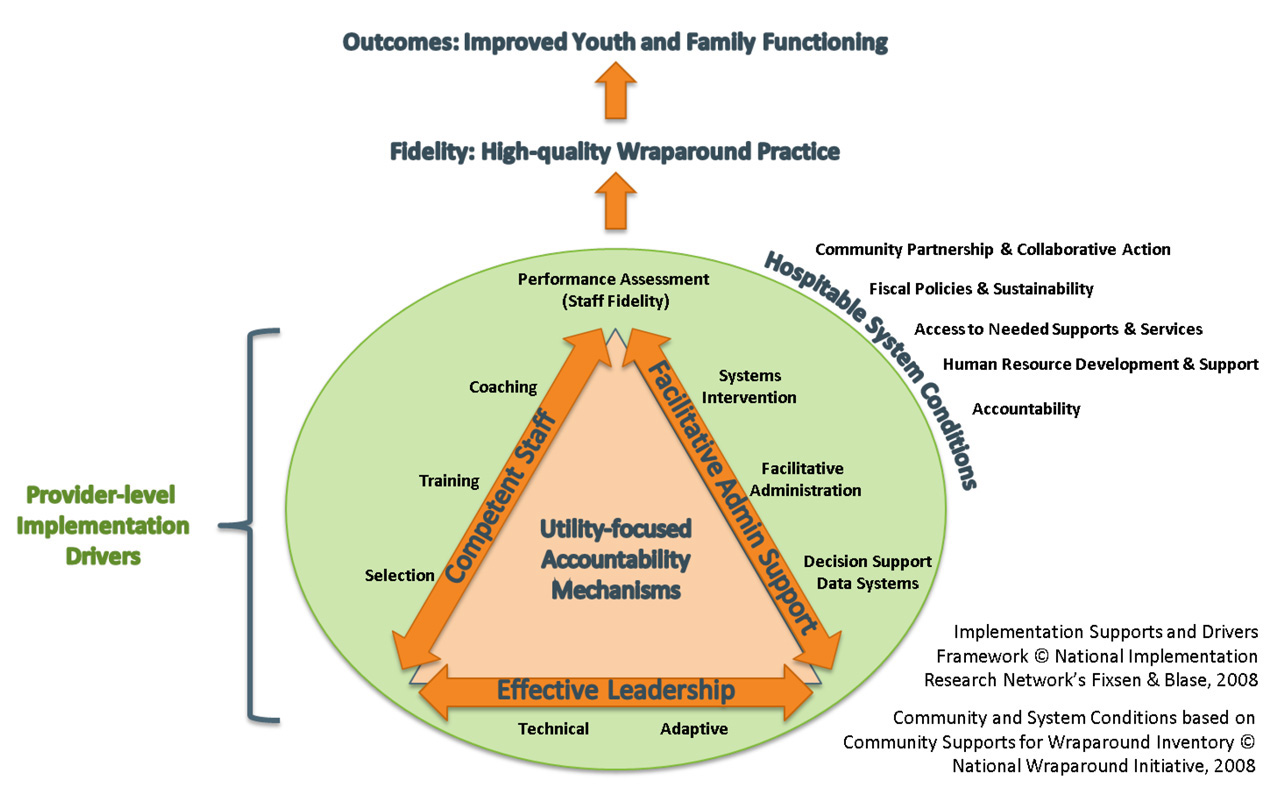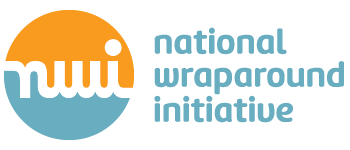High quality implementation of Wraparound requires a supportive organizational context as well as a hospitable system context. The NWI’s Implementation and Practice Quality Standards describe in detail the organizational and system features that are required for high quality implementation of Wraparound. An overview of these features is described below. Putting these organizational and system features into place is complex work, and thus many communities seek out consultation, such as that provided by NWI’s partner organization, the National Wraparound Implementation Center.
Organization-level implementation support. A supportive organization ensures that a variety of conditions are in place to promote high quality practice. For example, ensuring that staff acquire the skills and competencies they need to carry out their roles in Wraparound; ensuring that caseloads are reasonable and compensation is adequate; and ensuring that data is collected and analyzed so that the organization can monitor practice quality and program outcomes.
System-level implementation support. Providing comprehensive care through the Wraparound process also requires a high degree of collaboration and coordination among the child- and family-serving agencies and organizations that make up the system context of a Wraparound program in a community. These agencies and organizations need to work together to provide access to flexible resources and a well-developed array of services and supports in the community. In addition, other community- or system-level supports are necessary for Wraparound to be successfully implemented and sustained. Research on Wraparound implementation has defined these essential community and system supports for Wraparound, and grouped them into six themes:
- Community partnership: Representatives of key stakeholder groups, including families, young people, agencies, providers, and community representatives have joined together in a collaborative effort to plan, implement and oversee Wraparound as a community process.
- Collaborative action: Stakeholders involved in the Wraparound effort work together to take steps to translate the Wraparound philosophy into concrete policies, practices and achievements that work across systems.
- Fiscal policies and sustainability: The community has developed fiscal strategies to support and sustain Wraparound and to better meet the needs of children and youth participating in Wraparound.
- Access to needed supports and services: The community has developed mechanisms for ensuring access to the Wraparound process as well as to the services and supports that Wraparound teams need to fully implement their plans, including evidence-based interventions.
- Human resource development and support: The system supports Wraparound staff and partner agency staff to fully implement the Wraparound model and to provide relevant and transparent information to families and their extended networks about effective participation in Wraparound.
- Accountability: The community implements mechanisms to monitor Wraparound fidelity, service quality, and outcomes, and to oversee the quality and development of the overall Wraparound effort.
Comprehensive implementation support. The figure below visually synthesizes how implementation factors at the organization and system levels fit together to support high quality Wraparound. For more detail on these requirements, see NWI resources, including the Implementation and Practice Quality Standards and the Implementation Guide. Contact the National Wraparound Implementation Center (NWIC) for assistance with your implementation questions.
This diagram is from Wraparound Implementation and Practice Quality Standards (pg. 9).

Click diagram to see enlarged version

